Evolutionary Ecology
The department of Evolutionary Ecology gathers complementary skills in behavioural ecology, population dynamics, population biology, community ecology, and methodology (statistics and modelling). The research done in the department aims at studying how animal species evolve in a changing world by understanding the causes of the evolution of traits, adaptations and interactions. For that, we consider different levels of organization from individuals to populations and communities. Because organisms cannot be considered isolated from other biotic factors, we consider pathogens but also competing species within communities.
We study how individuals adapt to their environments that are largely impacted by anthropic pressures, and how life history traits and behaviour evolve in response to these pressures. Although we mainly focus on phenotype, we more and more consider the mechanistic link between the genotype and the phenotype. We develop the theoretical framework of our discipline through a conceptual and modeling approach. In parallel, we test hypotheses that arise from theoretical predictions through experimental, comparative and observational approaches on different biological models (insects, birds, mammals). Experimental approaches are developed in the laboratory (insect model) and in natura (bird, insect and mammal models). Observational and comparative research is mainly concerned with vertebrates. Our approaches are also, and increasingly, interested in the mechanisms of adaptive responses. In addition to the classical approaches of demographic analysis and trait change, methods of ecophysiology, chemical ecology and molecular biology are used.
Our department hosts several long-term studies of wild populations of different species. These long-term studies offer a valuable way to understand how biotic and abiotic factors affect individuals’ life history traits, and the functioning of populations in natura. Five populations of mammalian species are thus monitored for several years (more than 40 years on roe deer, 30 on Alpine marmots, 25 years on cats, 16 years on zebras, and 20 years on impala). Two of our study sites (La Sassière in Vanoise National Park (Alpine marmots) and Hwange National Park) have been certified as “Site d’Etude en Ecologie Globale” (SEEG), and two (ZA “Hwange” and ZA “Antarctic and sub-Antarctic”) were certified as “Zone Atelier” by the CNRS.
The department of Evolutionary ecology is also largely involved in training activities. Lastly, we also have strong socio-economic relationships. Indeed, because we address questions of major societal interest (global warming, public health) we tightly collaborate with socio-economic partners (Office Français de la Biodiversité, Vanoise National Park, Hwange National Park in Zimbabwe, Office National des Forêts, etc.) and participate to general public and media events.
Publications
Display of 661 to 690 publications on 2449 in total
L’apport de la génétique dans la compréhension de l’évolution des populations de ratons laveurs
Faune Sauvage .
Journal article
see the publicationMorphometrics and genetics highlight the complex history of Eastern Mediterranean spiny mice
Biological Journal of the Linnean Society . 130 ( 3 ) : 599-614
Journal article
see the publicationThe mark of captivity: plastic responses in the ankle bone of a wild ungulate (Sus scrofa)
Royal Society Open Science . 7 ( 3 ) : 192039
DOI: 10.1098/rsos.192039
Journal article
see the publicationBorn to be young? Prenatal thyroid hormones increase early-life telomere length in wild collared flycatchers
Biology Letters . 16 ( 11 ) : 20200364
Journal article
see the publicationExplore and move: a key to success in a changing world
Peer Community In Ecology .
Journal article
see the publicationExplore and move: a key to success in a changing world
Peer Community In Ecology . : 100058
Journal article
see the publicationHeterospecific song quality as social information for settlement decisions: an experimental approach in a wild bird
Animal Behaviour . 161 : 103-113
Journal article
see the publicationHost dispersal shapes the population structure of a tick‐borne bacterial pathogen
Molecular Ecology . 29 ( 3 ) : 485-501
DOI: 10.1111/mec.15336
Journal article
see the publicationInvestigating microbial associations from sequencing survey data with co-correspondence analysis
Molecular Ecology Resources . 20 ( 2 ) : 468-480
Journal article
see the publicationCan an herbivore affect where a top predator kills its prey by modifying woody vegetation structure?
Oecologia . 192 ( 3 ) : 779-789
Journal article
see the publicationDistribution and density of oxpeckers on giraffes in Hwange National Park, Zimbabwe
African Journal of Ecology . 58 ( 2 ) : 172-181
DOI: 10.1111/aje.12729
Journal article
see the publicationA negative association between horn length and survival in a weakly dimorphic ungulate
Ecology and Evolution . 10 ( 6 ) : 2793-2802
DOI: 10.1002/ece3.6050
Journal article
see the publicationUnder cover of the night: context-dependency of anthropogenic disturbance on stress levels of wild roe deer Capreolus capreolus
Conservation Physiology . 8 ( 1 )
Journal article
see the publicationThe conundrum of human immune system “senescence”
Mechanisms of Ageing and Development . 192 : 111357
Journal article
see the publicationEco‐evolutionary perspectives of the dynamic relationships linking senescence and cancer
Functional Ecology . 34 ( 1 ) : 141-152
Journal article
see the publicationLack of consensus on an aging biology paradigm? A global survey reveals an agreement to disagree, and the need for an interdisciplinary framework
Mechanisms of Ageing and Development . 191 : 111316
Journal article
see the publicationDrosophila suzukii oxidative stress response involves Jheh gene cluster but not transposable elements
Preprint
see the publicationBiological Invasion: The Influence of the Hidden Side of the (Epi)Genome
Functional Ecology . 34 ( 2 ) : 385-400
Journal article
see the publicationVaginal Tampon Colonization by Staphylococcus aureus in Healthy Women
Applied and Environmental Microbiology . 86 ( 18 ) : e01249-20
DOI: 10.1128/AEM.01249-20
Journal article
see the publicationNo sex differences in adult telomere length across vertebrates: a meta-analysis
Royal Society Open Science . 7 ( 11 ) : 200548
DOI: 10.1098/rsos.200548
Journal article
see the publicationFemale reproductive senescence across mammals: A high diversity of patterns modulated by life history and mating traits
Mechanisms of Ageing and Development . 192 : 111377
Journal article
see the publicationHunting, Predation and Senescence in Boars
Encyclopedia of Biomedical Gerontology . 978-0-12-816076-3
Book chapter
see the publicationHow do conditions at birth influence early‐life growth rates in wild boar?
Ecosphere . 11 ( 7 )
DOI: 10.1002/ecs2.3167
Journal article
see the publicationThe Demographic Buffering Hypothesis: Evidence and Challenges
Trends in Ecology & Evolution . 35 ( 6 ) : 523-538
Journal article
see the publicationGrow fast at no cost: no evidence for a mortality cost for fast early-life growth in a hunted wild boar population
Oecologia . 192 ( 4 ) : 999-1012
Journal article
see the publicationLocation Is Everything, but Climate Gets a Share: Analyzing Small-Scale Environmental Influences on Breeding Success in the White-Throated Dipper
Frontiers in Ecology and Evolution . 8
Journal article
see the publicationMulti‐event capture‐recapture analysis in Alpine chamois reveals contrasting responses to interspecific competition, within and between populations
Journal of Animal Ecology . 89 ( 10 ) : 2279-2289
Journal article
see the publicationDopamine mediates life-history responses to food abundance in Daphnia
Proceedings of the Royal Society B: Biological Sciences . 287 ( 1930 ) : 20201069
Journal article
see the publicationBiodemography: Unifying Concepts from Biology, Demography, and Mathematics
Trends in Ecology & Evolution . 35 ( 6 ) : 475-476
Journal article
see the publicationLate-life costs of raising sons in bighorn sheep
Proceedings of the National Academy of Sciences of the United States of America . 117 ( 11 ) : 5556-5558
Journal article
see the publication
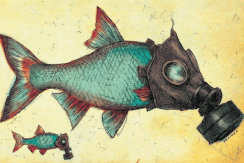
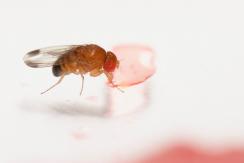
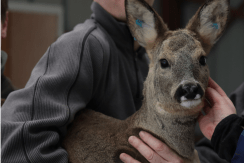
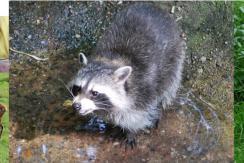
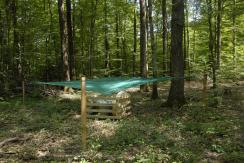
You also, comment on this article